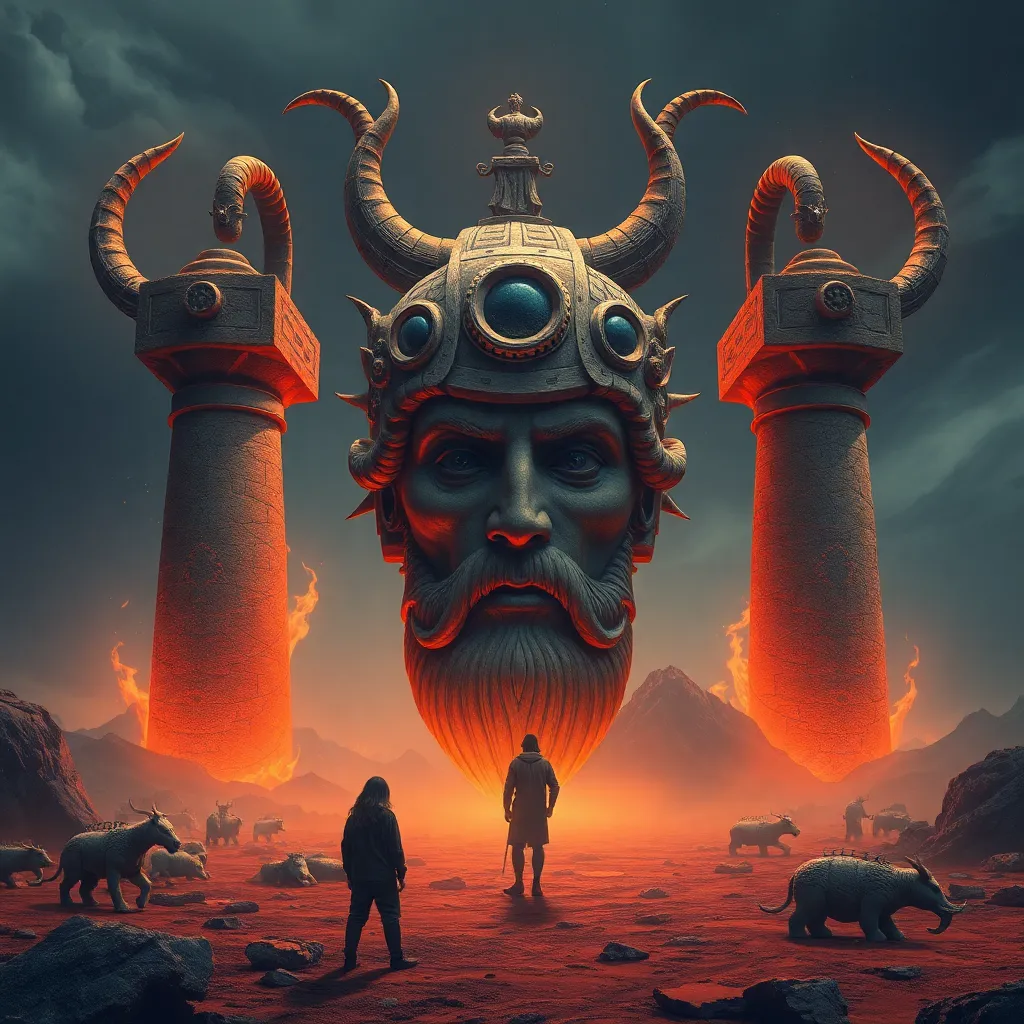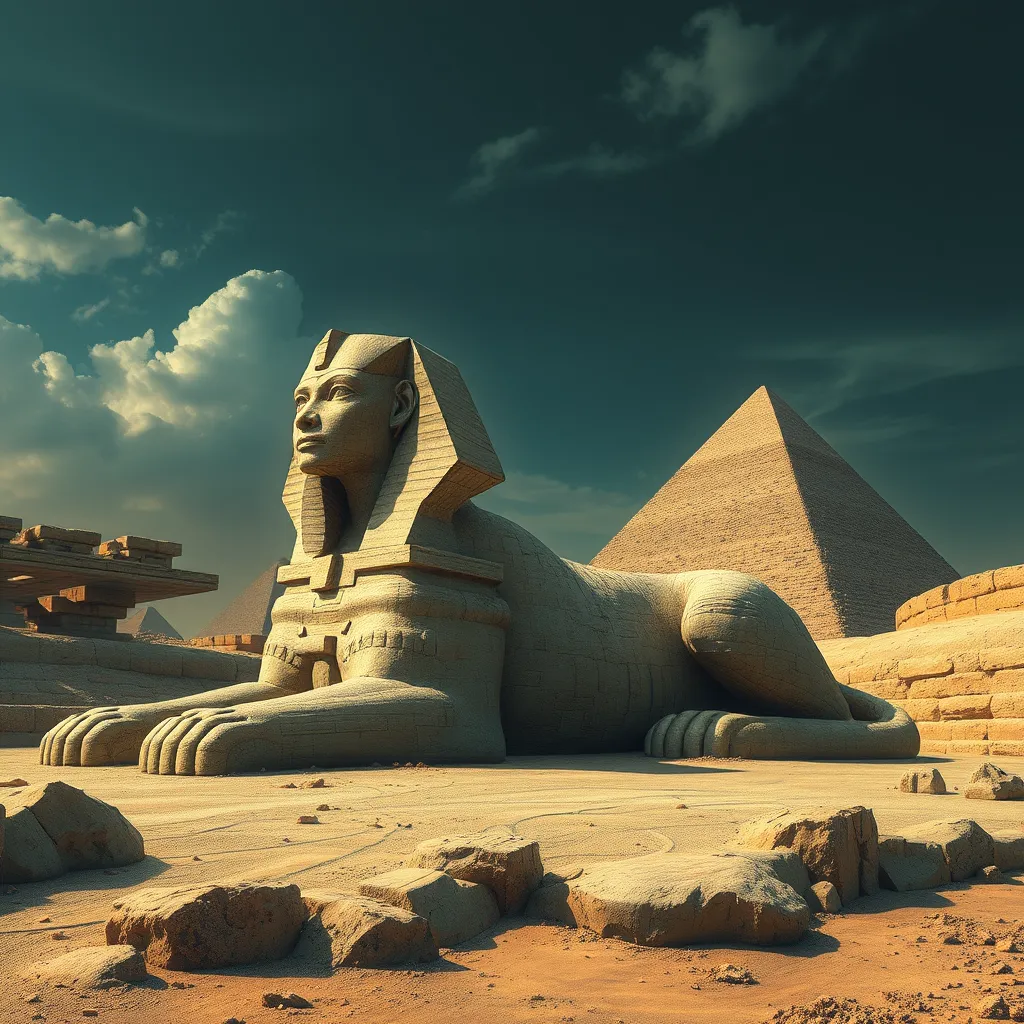The Cyclops and the Underworld: The Role of the One-Eyed Giants in the Afterlife
I. Introduction
The Cyclopes, the legendary one-eyed giants of ancient mythology, have captivated the imagination of many through their unique characteristics and allegorical significance. These beings, often depicted as brutish yet powerful, have a rich history across various cultures. In contrast, the concept of the Underworld serves as a significant aspect of mythology, representing the realm of the dead and the afterlife. This article explores the significance of Cyclopes in the Underworld and their roles within afterlife narratives, shedding light on their complex relationships with themes of death and the unknown.
II. Origins of the Cyclops in Mythology
A. Historical context of Cyclopes in ancient cultures
The origins of the Cyclops can be traced back to ancient civilizations, particularly in Greek mythology. The term “Cyclops” itself is derived from the Greek words “kyklos,” meaning circle, and “ops,” meaning eye, reflecting their distinctive single eye. In ancient texts, they are often portrayed as formidable beings, skilled in craftsmanship and associated with natural phenomena.
B. Description of the Cyclops in Greek mythology
In Greek mythology, Cyclopes are typically depicted as the offspring of Uranus and Gaia. The most famous among them are Polyphemus, who encountered Odysseus in Homer’s “Odyssey.” Polyphemus embodies the brute strength and primal instincts of the Cyclopes, showcasing their dual nature as both creators and destroyers.
C. The symbolism of the one-eyed giant in different mythologies
Across various cultures, the Cyclops symbolizes different themes:
- Isolation: The single eye often represents a lack of perspective, paralleling themes of loneliness.
- Power: Their immense size and strength symbolize the raw power of nature.
- Creativity and Destruction: As skilled builders, they can create magnificent structures but also wreak havoc.
III. The Underworld: A Brief Overview
A. Definition and significance of the Underworld in mythology
The Underworld, known by various names in different cultures (such as Hades in Greek mythology, the Duat in Egyptian beliefs, or Hel in Norse mythology), serves as a crucial narrative element. It is often depicted as a dark, shadowy realm where souls reside after death, facing their fate based on the lives they led.
B. Key figures and realms within the Underworld
Each culture has its own figures and realms within the Underworld:
- Hades: Ruler of the Greek Underworld, overseeing the dead.
- Charon: The ferryman who transports souls across the river Styx.
- Osiris: Egyptian god associated with resurrection and the afterlife.
C. The function of the Underworld in various cultures’ beliefs about life after death
The Underworld serves multiple functions, including:
- Providing a space for the souls of the deceased.
- Offering a place of judgment based on one’s earthly deeds.
- Symbolizing the cycle of life and death, and the possibility of rebirth.
IV. Cyclopes and Their Connection to the Afterlife
A. Myths linking Cyclopes to the underworld
In various myths, Cyclopes are linked to the Underworld in several ways. For instance, some tales suggest that they inhabited the borders of the Underworld, serving as guardians of the realm, much like the mythical Cerberus. Their formidable nature made them ideal protectors of the passage between the worlds of the living and the dead.
B. The role of Cyclopes as guardians or guides in the afterlife
Cyclopes are often portrayed as guides for souls navigating the treacherous paths of the afterlife. Their single eye symbolizes a focused vision, allowing them to see the true nature of souls and their fates. This role underscores their importance in the journey of the deceased.
C. Interpretations of Cyclopean imagery in funerary art and literature
In funerary art, Cyclopean imagery often appears in depictions of the afterlife. These representations serve to invoke the strength and protection offered by Cyclopes, ensuring safe passage for the departed. Literature also reflects this connection, with narratives exploring the Cyclopes as both obstacles and facilitators in the journey of death.
V. The Cyclops in Popular Culture
A. Representation of Cyclopes in modern media
In contemporary culture, Cyclopes have been reimagined in various forms of media, from films to literature. They are often portrayed as misunderstood creatures or comedic figures, diverging from their ancient depictions.
B. The evolution of the Cyclops narrative in literature and film
With the advent of modern storytelling, the Cyclops narrative has evolved. From the terrifying beast in “The Odyssey” to more sympathetic portrayals in films like “Percy Jackson,” the one-eyed giant has shifted from a symbol of fear to one of complexity and depth.
C. How contemporary portrayals contrast with ancient depictions
Modern portrayals often emphasize themes of individuality and emotion, contrasting sharply with the ancient view of Cyclopes as mere brutish figures. This evolution highlights changing societal values and the need for relatability in storytelling.
VI. Comparative Analysis: Cyclopes Across Different Cultures
A. Cyclopean figures in Roman and Norse mythology
In Roman mythology, Cyclopes were often depicted similarly to their Greek counterparts, known for their strength and craftsmanship. In Norse mythology, while there are no direct equivalents, one-eyed figures like Odin share similarities, emphasizing wisdom and sacrifice.
B. Similarities and differences in the portrayal of one-eyed giants
While Cyclopes in different cultures share common traits, such as strength and guardianship, their roles can vary significantly:
- In Greek mythology, they are creators and destroyers.
- In Norse mythology, one-eyed figures often symbolize wisdom and sacrifice.
C. The universal themes of guardianship and judgment in the afterlife
Across cultures, Cyclopes and similar figures often embody themes of guardianship in the afterlife. Their roles emphasize the importance of judgment and protection, reflecting the universal human concerns surrounding death and the afterlife.
VII. The Symbolism of the Cyclops in the Afterlife
A. The Cyclops as a metaphor for isolation and introspection
The solitary eye of the Cyclops can be seen as a metaphor for isolation, representing the introspective journey of the soul in the afterlife. This imagery evokes the idea that in death, one must confront their own essence and experiences.
B. The implications of blindness and vision in relation to the underworld
Blindness, often associated with the Cyclops, symbolizes a different kind of vision—one that transcends physical sight. In the context of the Underworld, it suggests the need for deeper understanding and insight into one’s life and choices.
C. The Cyclops as a representation of primal forces in the afterlife
Cyclopes can also embody primal forces, representing the raw and untamed aspects of nature and life. In the afterlife, they may symbolize the confrontation with these forces, compelling souls to reckon with their true nature.
VIII. Conclusion
In summary, the role of Cyclopes in the Underworld illustrates their multifaceted significance in mythology. As guardians, guides, and symbols of introspection and primal power, they contribute richly to narratives surrounding the afterlife. The enduring legacy of Cyclopian myths continues to influence our understanding of life after death, reminding us of the complexities of existence and the journeys we undertake beyond this life.



